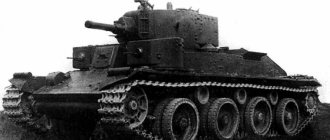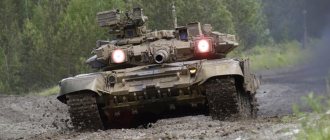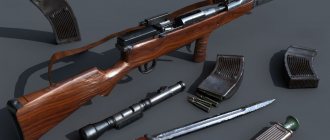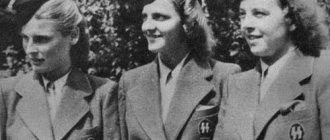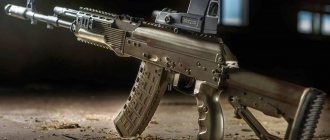Combat module of the latest T-15 infantry fighting vehicle on the Armata platform
A promising development for the Russian army is an uninhabited cannon and machine gun module. It is designed to arm various combat vehicles, primarily infantry fighting vehicles, both existing and future. In particular, the AU-220M can be installed on the Armata, Kurganets-25 and Boomerang platforms, as well as on small displacement ships and boats.
Nikolay Komov, chief designer for the production line of Burevestnik Central Research Institute JSC, part of the Uralvagonzavod corporation, spoke about the characteristics of the development. According to him, the module is controlled from the operator’s workplace, which is located in the combat vehicle, and also remotely.
The module has a circular rotation and a firing range of up to 14.5 kilometers with a maximum rate of fire of 80 rounds per minute. The ammunition load includes 57-mm shells: multifunctional with a remote-contact fuse, armor-piercing and guided. This makes it possible to effectively destroy small unmanned aerial vehicles, low-flying aircraft and helicopters, as well as ground-based lightly armored vehicles and field fortifications. Coaxed with the cannon is a 7.62 mm machine gun with 1,000 rounds of ammunition.
Nikolay Komov, chief designer for production at JSC Central Research Institute Burevestnik, part of the Uralvagonzavod corporation of the Rostec state corporation, spoke about the characteristics of the development. According to him, the module is controlled from the operator’s workplace, which is located in the combat vehicle, and also remotely.
Combat module AU-220MA.
“At the first exhibitions we exhibited a prototype of this module. The design, equipment and much more were different. Tests of the prototypes confirmed the previously stated characteristics, but at the same time, during the testing process, the design of the module underwent a number of changes: the height of the module was reduced, which made the loading system more convenient, and an improved television target tracking machine with more accurate characteristics was installed on the module,” Komov said.
Combat vehicles armed with AU-220M are capable of firing from a standstill, on the move and afloat, at any time of the day and in any weather. The ability to remotely control weapons via communication channels allows you to solve a whole range of combat missions without the direct participation of the crew, in robotic mode.
Equipping a significant fleet of light and medium-category armed armored vehicles with the AU-220M module will significantly increase their combat capabilities.
Source
Found a typo? Select a fragment and press Ctrl+Enter.
Tags: Ground equipment 7 nm Armata BMP combat module Boomerang caliber Kurganets T-15
Previous article Aviation heavy machine gun YakB-12.7 of the Yakushev and Borzov system
Next article Armored vehicles on the Boomerang platform. Increase hull armor protection
Provided by SendPulse
Likes 0
- 0
- 0
- 0
- 0
Only for the parade: T-14 “Armata” cannot reach the army
After the military parade on November 7, 1941, the legendary T-34s from Red Square went straight to the front, where they earned fame as the best tank of the Great Patriotic War and became the most popular tank of the Second World War (35,330 were produced, excluding the T-34−85). Other tanks were subsequently produced in large quantities in the Soviet Union, including the modified T-90 and T-80 currently in service. But the fate of the widely advertised and very promising T-14 tank on the Armata platform somehow did not work out.
As SP already wrote in its military review (May 8, 2012), the history of the Armata in the Russian army is over, and this tank itself was nicknamed the “ceremonial” tank, since it can mostly be seen only on Red Square. So this year, T-14s rolled along the paving stones near the Kremlin walls and went, no, not to the troops at the training grounds, but to the factory boxes for diagnostics and routine self-service. And although the head of the Uralvagonzavod brigade that prepared the T-14 for the Victory Parade, Mikhail Begman , told reporters that the stage of “childhood diseases” in the equipment on the Armata platform had passed, it was not clear what kind of “diseases” they were talking about. And this tank has not yet entered service with the Russian army, even in test mode, although it was promised.
Armata - the basis of the Russian blitzkrieg
Home / Russia / Armata - the basis of the Russian blitzkrieg /
Heavy infantry fighting vehicle T-15 "Armata" is capable of changing the course of the war In order to understand the essence of the latest Russian infantry fighting vehicle T-15, built on the basis of "Armata", it is necessary to outline the situation that was on the battlefields before its creation.
In addition to the infantry, three different classes of combat vehicles took part in the land theater of operations: armored personnel carriers, infantry fighting vehicles and tanks.
An armored personnel carrier, a combat transporter, is an armored vehicle on wheels that can quickly deliver infantrymen to the battlefield. An armored personnel carrier should not take part in the battle, therefore, pictures of burned armored personnel carriers, which could often be seen during the current conflict in the South-East of Ukraine, are the result of errors in the use of this military equipment. The combat maximum for an armored personnel carrier is the evacuation of the wounded from the battlefield, provided that the enemy does not have anti-tank weapons.
BMP (BMD), an infantry fighting vehicle, is a light armored tracked vehicle that is designed for transportation and fire support of infantry on the battlefield. The armored personnel carrier has only small arms for self-defense, but the infantry fighting vehicle also has cannon armament, which allows this combat vehicle to successfully support infantry in battle.
A tank is the most protected armored vehicle with powerful cannon and machine gun armament. The tank is the most durable combat mechanism in land battles.
The Armata platform has made adjustments to these classes of armored vehicles.
The functions of the BRT remained unchanged - delivery of infantry to the battlefield, the T-14 tank is a powerful modern tank with the ability to attack air targets, but the T-15 heavy infantry fighting vehicle is the first combat vehicle in the history of Russian weapons designed to transport infantry, but with a level protection like a tank!
Previously, before the T-15, infantrymen on the battlefield could only rely on the rather weak armor of infantry fighting vehicles and infantry fighting vehicles, but now soldiers can count on the protective properties of the latest T-15 infantry fighting vehicle!
In general, the tendency to protect infantry with increasingly heavy infantry fighting vehicles can be seen both in domestic armored vehicles and in foreign models: a) domestic: BMP-1 - 13.0 tons (1966); BMP-2 – 14.0 tons (1977); BMP-3 – 18.7 tons (1987);
b) and foreign, for example, the American Bradley infantry fighting vehicle - M2 and M2A1 - 22.6 tons (1981); M2A2 - 27 tons and 30 tons, respectively without dynamic protection and with it (1988).
Moreover, the modern German Puma infantry fighting vehicle weighs about 43 tons, and this despite the fact that the T-90 tank has a mass of 46.5 tons!
As you can see, each subsequent infantry fighting vehicle has a greater mass than its predecessor - this is due to the fact that infantry fighting vehicles become more and more protected over time (the mass of the armor itself and, accordingly, the power units increases).
Recent developments in this area are gradually bringing BMPs closer to a tank in terms of protection.
Now let us describe the current situation. Currently, the Russian Armed Forces are in the process of adopting two combat platforms for infantry fighting vehicles: Kurganets-25 and T-15 Armata.
The Kurganets-25 infantry fighting vehicle has a mass of about 25 tons and is intended to replace existing infantry fighting vehicles of the Russian army.
The T-15 infantry fighting vehicle has a mass of about 50 tons and provides protection for soldiers at the level of the newest T-14 Armata tank. Until today, there were no analogues of the T-15 in the Russian army.
The question arises: why did Russian designers create the T-15?
Indeed, the presence of such powerful shelter as the T-15 on the battlefield for modern infantrymen should radically reduce personnel losses, but it seems that this is not the main thing for the T-15.
Modern infantry is armed with a rich arsenal of anti-tank weapons, in particular RPGs and ATGMs, which gives infantry an advantage over tanks. The current battles in Iraq, Syria and the Donbass clearly show that tanks without infantry support cannot successfully attack enemy infantry, and infantry fighting vehicles on the battlefield are destroyed with tremendous speed.
The usual function of today's tank is to be a "long-range sniper rifle", which is located behind the attacking infantry formations, supporting them with the fire of its gun and machine guns. This combat formation results in a rather slow pace of advancement into the depths of the enemy’s defenses compared to the battles of the Second World War (pushing, not breaking). An attempt to revive the system of quickly (within several hours, up to one day) breaking into the enemy’s strong defenses is the creation of the T-15.
An attacking armored unit, armed with T-14 and T-15, has the ability to get close to enemy infantry located in the fortifications, disembark its own infantry from the T-15 and, supporting it with fire from cannons and machine guns of T-14 and T-15, quite quickly suppress enemy resistance by breaking through his defenses.
An advancing armored unit, armed with the T-90 (T-14) and BMP-3 (BMP Kurganets-25), does not have such an opportunity: 1) the weak protection of the BMP makes the infantry hidden in it an easy target for the defending soldiers; 2) without an infantry fighting vehicle, the rate of advance of the attacking column drops to the speed of a foot soldier; 3) the tank is forced not to go with the infantry, but behind it, as a means of support.
Thus, an attacking armored unit, equipped with weak infantry fighting vehicles and regardless of the power and protection of the tanks, actually behaves like an infantry unit, only reinforced with armored vehicles.
The versatility of the Armata platform makes it possible to build on its basis self-propelled guns, various engineering vehicles, bridge layers, mining and demining vehicles, and so on, expanding the capabilities of attack tank divisions. All these military vehicles must help the attacking armored unit overcome minefields, rivers and other obstacles under enemy fire.
Let's remember history: after the First World War, many countries had tanks, but only in Germany, on their basis, a structure was created in the form of a tank division, which made it possible to quickly break into enemy defenses, go to the rear and surround hundreds of thousands of defenders. The Wehrmacht's victories in the battles of 1939-1942 were due precisely to the structure of armored formations, that is, to qualitative organizational superiority, and not to the outstanding technical characteristics of individual types of equipment. A well-known fact: in 1941, the Red Army had more tanks than the Wehrmacht; Moreover, the armor thickness and gun caliber of Soviet tanks were higher than German ones; however, that year the Germans advanced and the Russians retreated.
Something similar may be starting to take shape now: the presence of a large number of T-15s in a modern Russian tank division makes it possible to widely use infantry in attack operations, as well as in defense against enemy counterattacks, which greatly increases the crushing impact on the enemy army.
According to German and Russian guidelines from the Great Patriotic War for tank formations, tank-tank combat is disadvantageous for the attacking side; in this case, counteraction to advancing tanks is entrusted to anti-tank artillery. The essence of the tank in this strategy is to suppress the resistance of enemy infantry. Based on this understanding of the essence of the tank, tank battles are not what a tank is created for, so all sorts of comparisons like T-72 versus Abrams or T-14 Armata versus Leopard-2 are meaningless.
A combat vehicle, be it a tank or an infantry fighting vehicle, must ensure the suppression of enemy infantry resistance, and not strive for epic battles like the tank battle that took place near Prokhorovka in 1943. That is why, strange as it may sound, a tank division armed with a T-64 or T-72, together with a T-15 infantry fighting vehicle, is no less a formidable force in the Russian blitzkrieg strategy than the same division, but armed exclusively with the T-14 "Armata" and BMP T-15!
In general, the Russian tank formation, built on the basis of the T-15 Armata infantry fighting vehicle, allows encircling, and not just pushing and grinding, which is impossible without the T-15, which is (to the surprise of many!) an even more important component for the encirclement strategy than the T-14 tank! Therefore, it is the T-15 BMP that may well be for the Russian army the very cornerstone on which the entire strategy of a modern blitzkrieg can rest, which is why domestic designers created this very protected vehicle.
Konstantin Shchemelinin
Source
We recommend reading
- Russia 04/30/2020
Mishustin became infected with coronavirus and temporarily resigned as prime minister
- Russia 07/04/2020
“There is no end to Russian patience”: Western media about “zeroing”
- Russia 05/04/2020
Moscow sketches from the times of coronavirus
- Russia 05/16/2020
10 steps to the success of the Russian Federation: advice to the Bank of Russia and the government
Partner News
MILITARY REVIEW AND POLITICS
Introduction
Little by little information is beginning to appear on the T-15 infantry fighting vehicle based on the armature. This is the first Russian NON-FLOATING infantry fighting vehicle with normal armor. All previous models were able to swim, but the crew was protected only from drafts, so the shooters most often moved on the armor and not inside the vehicle.
Layout
The T-15 infantry fighting vehicle has a front-engine layout. It’s not convenient to look at the road with this engine arrangement, and it’s not necessary. The driver has a screen and not a large steering wheel like in a computer game. The image from the camera is transmitted to the screen and driving the car resembles a computer game. After training on the simulator, the driver may not immediately understand that he is already taking part in hostilities. The control compartment is located immediately behind the engine. The driver, weapon operator and commander sit in it (in the direction of movement from left to right). In the stern there is a compartment for eight shooters, plus a ninth spare place. The shooters sit facing each other and, accordingly, sideways to the movement. I think this is not the best option. Exit is through the stern door. The benches are folding and are made in such a way that they do not transfer the shock of a mine explosion to the fighters’ asses. The most interesting thing is that in the stern on the left side of the hull there is a small door and behind it there is a telephone handset. Do you think this is for communication with a satellite or with command? No, this handset is designed to call the soldiers sitting in the T-15 infantry fighting vehicle and ask - why are we sitting, why aren’t we going out to fight? Above the compartment for the shooters there is an autonomous combat module made in the form of a rotating turret.
The turret contains an automatic thirty-millimeter cannon and a coaxial machine gun of regular caliber. On the sides of the turret there are twin launchers of KORNET anti-tank guided missiles. Both the cannon and anti-tank missiles can be used against helicopters. Many hotheads claim that they can shoot down both airplanes and unmanned aerial vehicles. Possibly in case of an accidental hit.
Armor and protection
The protection of the T-15 infantry fighting vehicle consists of three main elements. This is the armor itself, an automatic system for disrupting the guidance of guided weapons and an automatic system for destroying incoming enemy combat elements. The armor is multi-layered with dynamic built-in elements in the frontal part and mounted on the sides of the hull.
The photograph clearly shows two rows of mounted armor elements covering the troop compartment and the ammunition compartment of the combat module. The automatic system for disrupting the guidance of guided weapons consists of sensors and launchers. When the sensors detect the operation of guidance equipment (this can be either a laser beam or a radio beam from a locator), a smoke cloud with small dipole reflectors is fired from the launchers and the T-15 becomes invisible to enemy guidance systems for some time. The automatic system for destroying incoming enemy combat elements consists of sensors and launchers. When an enemy missile approaches, a combat element is fired towards it, destroying it.
The T-14 infantry fighting vehicle has the same protection system as the T-14 ARMATA TANK, only the location of the sensors is slightly different.
The photographs show the weight, dimensions and amount of ammunition of the T-15. But since the author gave incorrect data on the crew - there are three people in the control compartment, and one seat is empty in the landing compartment, then perhaps he is misleading us with the rest of the data. And most importantly, many authors write about a crew of two people. This means that they mindlessly steal text from each other.
Power plant of the T-15 infantry fighting vehicle
The power plant is made as a single unit along with an automatic transmission and two radiators.
Both radiators are clearly visible in this photo. Each radiator has its own fan. In my opinion the location is not very good. In front of the observation devices there will always be a haze and mirages created by powerful currents of warm air. Diesel engine X-shaped with supercharging 2V-12-3A. It can be called new very conditionally - it is twenty years old at lunchtime. Only earlier it was called A-85-3
Here he is at the exhibition on the far right. Judging by the designation 2B-12-3A, the engine has twelve cylinders, that is, three per block. Today the 2V-12-3A engine has very high characteristics, at least the declared very high ones. Power one thousand five hundred horsepower. Nowadays, it’s true that power is usually given in kilowatts, but I’m used to horsepower and the values turn out to be larger. And this with a volume of only thirty-four and a half liters and an engine weight of one and a half tons. In this case, the liter power is a little more than forty-three horsepower per liter. Like the best aviation gasoline engines of the SECOND WORLD WAR. Specific power (horsepower per kilogram of weight) is slightly worse and equal to one. The compression ratio is eleven. The maximum speed is two thousand per minute. After compression, the air enters a special radiator and is cooled there. This allows you to increase the air density at the same pressure and, as a result, supply more oxygen to the engine cylinders. A high compression ratio and high engine speeds lead to high thermal and mechanical loads, so the engine life is likely to be very short. Aviation engines with such liter power indicators had a service life of about one hundred hours. Now the level of production is somewhat different, but I don’t think that the engine life exceeds five hundred hours. Therefore, information is often found that the power of a 2V-12-3A engine in operation is limited to one thousand three hundred horsepower.
Some more photos of the T-15 infantry fighting vehicle
Please note that in the lower photo on the left rear corner of the car, between the side lamp and the trailer ear, there is that same small door behind which there is a telephone handset for talking with the crew. You can click on the photographs, some of them are enlarged to unprecedented sizes.
World
The Ministry of Defense has agreed on the armament of the newest T-15 heavy infantry fighting vehicle. For the first time, the ammunition load of the BMP version with the 57-mm Kinzhal module will include high-precision guided projectiles and ammunition with an intelligent remote detonation system . The latter are equipped with a special system with a programmable fuse and are especially dangerous for the enemy hidden in buildings and trenches. And thanks to guided 57-mm projectiles, the T-15 can easily cope with drones, helicopters, airplanes and even missiles.
The armor is getting stronger
At present, the range of ammunition for the combat modules of the T-15 heavy infantry fighting vehicles has been agreed upon, sources in the military department told Izvestia. For the first time, it will include high-tech guided and programmable artillery shells, which can be used not only against enemy ground equipment, but also to hit air targets.
For the first time, the ammunition load of the new remote-controlled combat module DUMB-57 “Dagger” will include space for placing at least eight guided projectiles of 57 mm caliber.
The T-15 infantry fighting vehicle with the Kinzhal will be shown for the first time at the Victory Parade in Moscow on June 24. As Izvestia has already written, a 2S38 “Derivation-PVO” self-propelled artillery mount will also pass through Red Square, the arsenal of which may also include new ammunition.
Now the T-14 tank is being adopted, and the T-15 infantry fighting vehicle should provide it with adequate support on the battlefield, says military expert Alexey Khlopotov.
“In the original configuration, the T-15 was equipped with a Boomerang-B combat module with a 30-mm cannon, which was clearly not enough for such a powerful vehicle,” the specialist said. — Moreover, there is now a trend in the world to increase the mass of infantry fighting vehicles due to increasing the thickness of the armor. Such vehicles are quite difficult to destroy with thirty-millimeter guns. The idea to install a 57-mm cannon arose for this reason.
This caliber not only has good armor penetration, but also a number of other advantages, including new ammunition, the expert believes.
Smarter shells
Initially, the 57-mm guided projectile was developed for several variants of combat modules. But so far the new product has only been included in the Kinzhal’s ammunition load. Conventional unguided projectiles were considered insufficiently effective against modern targets.
“In particular, a 57-mm gun can fire high-explosive fragmentation shells with a programmable fuse,” explained Alexey Khlopotov. — They allow you to set the detonation distance, directing fragmentation streams to the target . Such ammunition will increase the effectiveness of the combat vehicle when fighting enemy personnel - primarily, grenade launchers and ATGM crews, and unarmored vehicles.
These properties will also be useful when fighting helicopters and drones, especially small and low-speed ones.
Quite expensive guided missiles will help in confrontation with fast helicopters and large drones - they can now be destroyed with one shot. The main advantages of such ammunition are accuracy and lower ammunition consumption.
In addition, the 57 mm artillery system is interesting because it can fire old shells that were developed for the S-60 cannon. This ammunition is cheap but effective.
According to the developer, the weight of a guided projectile for a 57-mm cannon reaches two kilograms. Of this, 400 grams are explosives. For comparison, a conventional 30-mm projectile used in modern domestic light armored vehicles and anti-aircraft guns has eight times less charge.
The bulk of the ammunition will still consist of conventional unguided projectiles. The new module will use the armor-piercing UBR-281U against protected vehicles. At a distance of one and a half kilometers, a 57-mm projectile penetrates at least 12 centimeters of armor. This is more than any modern infantry fighting vehicle or armored personnel carrier. UOR-281U fragmentation tracer grenades will help hit other targets.
A vehicle with the dimensions of a tank
At previous parades, the T-15 infantry fighting vehicle based on the Armata tracked platform could be seen with a combat module equipped with a 30-mm cannon. But even with it, the vehicle developed at Uralvagonzavod exceeds the mass of most Soviet and Russian tanks of the previous generation. Fully equipped, it will weigh 55 tons. Dimensions and dimensions allow you to combine good security, powerful weapons and a spacious compartment for troops.
A special feature of the combat vehicle was its front-mounted engine. This provides additional protection for the crew and soldiers being transported. In addition, the frontal armor of the infantry fighting vehicle is at the level of modern tanks. Enhances the security of the T-15 and the active protection complex. It allows you to intercept missiles and shells flying at it. All this gives the promising infantry fighting vehicle and landing force unprecedented security.
Both the commander and the gunner have developed surveillance equipment that is needed to detect and engage ground and air targets. They have at their disposal television and thermal imaging sights, a laser range finder and a beam channel for controlling missiles and projectiles.
For the first time, prototypes of new equipment on the Armata platform were demonstrated at the Moscow parade on May 9, 2020. According to Deputy Defense Minister Alexei Krivoruchko, in 2020 a contract was signed for the purchase of 132 T-14 tanks and T-15 infantry fighting vehicles. It was stated that the first production vehicles of the new types would begin to enter service with the troops in 2020, and the contract would be completed in 2021.
